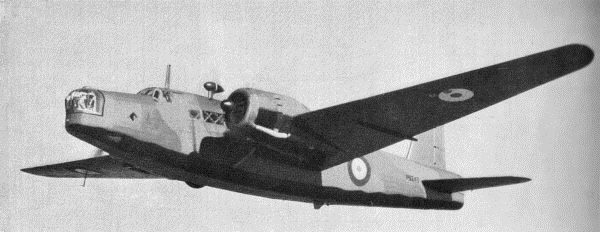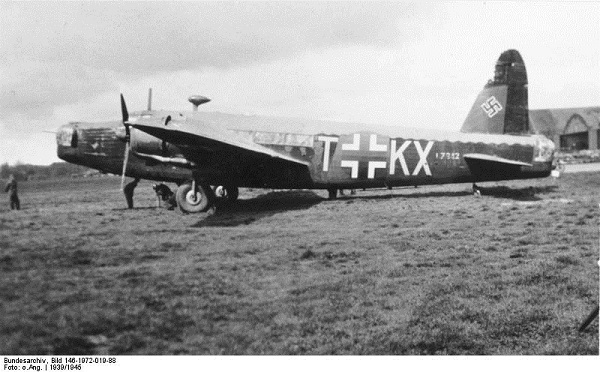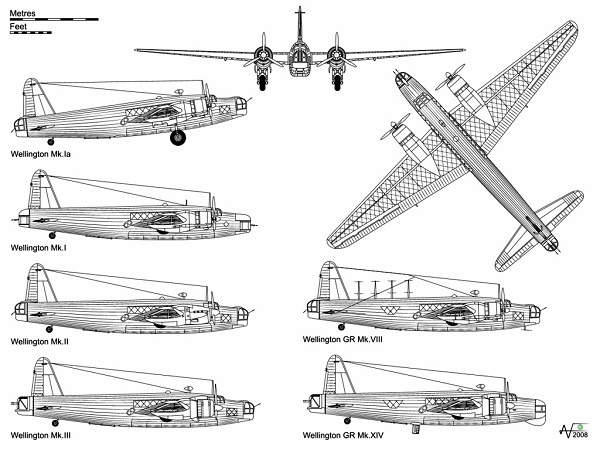

The Vickers Wellington is a British twin-engined, long-range medium bomber. It was designed during the mid-1930s at Brooklands in Weybridge, Surrey, led by Vickers-Armstrongs' chief designer Rex Pierson; a key feature of the aircraft is its geodetic airframe fuselage structure, which was principally designed by Barnes Wallis. Development had been started in response to Air Ministry Specification B.9/32, which was issued in the middle of 1932. This specification called for a twin-engined day bomber capable of delivering higher performance than any previous design. Other aircraft developed to the same specification include the Armstrong Whitworth Whitley and the Handley Page Hampden. During the development process, performance requirements such as for the tare weight changed substantially, and the engine used was not the one originally intended.

The Wellington was used as a night bomber in the early years of the Second World War, performing as one of the principal bombers used by Bomber Command. During 1943, it started to be superseded as a bomber by the larger four-engined "heavies" such as the Avro Lancaster. The Wellington continued to serve throughout the war in other duties, particularly as an anti-submarine aircraft. It holds the distinction of having been the only British bomber that was produced for the duration of the war, and of having been produced in a greater quantity than any other British-built bomber. The Wellington remained as first-line equipment when the war ended, although it had been increasingly relegated to secondary roles. The Wellington was one of two bombers named after Arthur Wellesley, 1st Duke of Wellington, the other being the Vickers Wellesley.
A larger heavy bomber aircraft designed to Specification B.1/35, the Vickers Warwick, was developed in parallel with the Wellington; the two aircraft shared around 85% of their structural components. Many elements of the Wellington were also re-used in a civil derivative, the Vickers VC.1 Viking.

Crew: six
Length: 64 ft 7 in (19.69 m)
Wingspan: 86 ft 2 in (26.26 m)
Height: 17 ft 5 in (5.31 m)
Wing area: 840 sq ft (78 m2)
Empty weight: 18,556 lb (8,417 kg)
Max takeoff weight: 28,500 lb (12,927 kg)
Powerplant: 2 × Bristol Pegasus Mark XVIII radial engines, 1,050 hp (780 kW) each
Maximum speed: 235 mph (378 km/h; 204 kn) at 15,500 ft (4,700 m)
Range: 2,550 mi (2,216 nmi; 4,104 km)
Service ceiling: 18,000 ft (5,500 m)
Rate of climb: 1,120 ft/min (5.7 m/s)
Guns: 6–8× .303 Browning machine guns:
2× in nose turret
2× in tail turret[note 1]
2× in waist positions [note 2]
Bombs: 4,500 lb (2,000 kg) bombs



